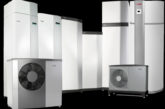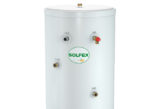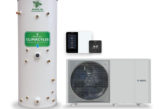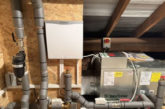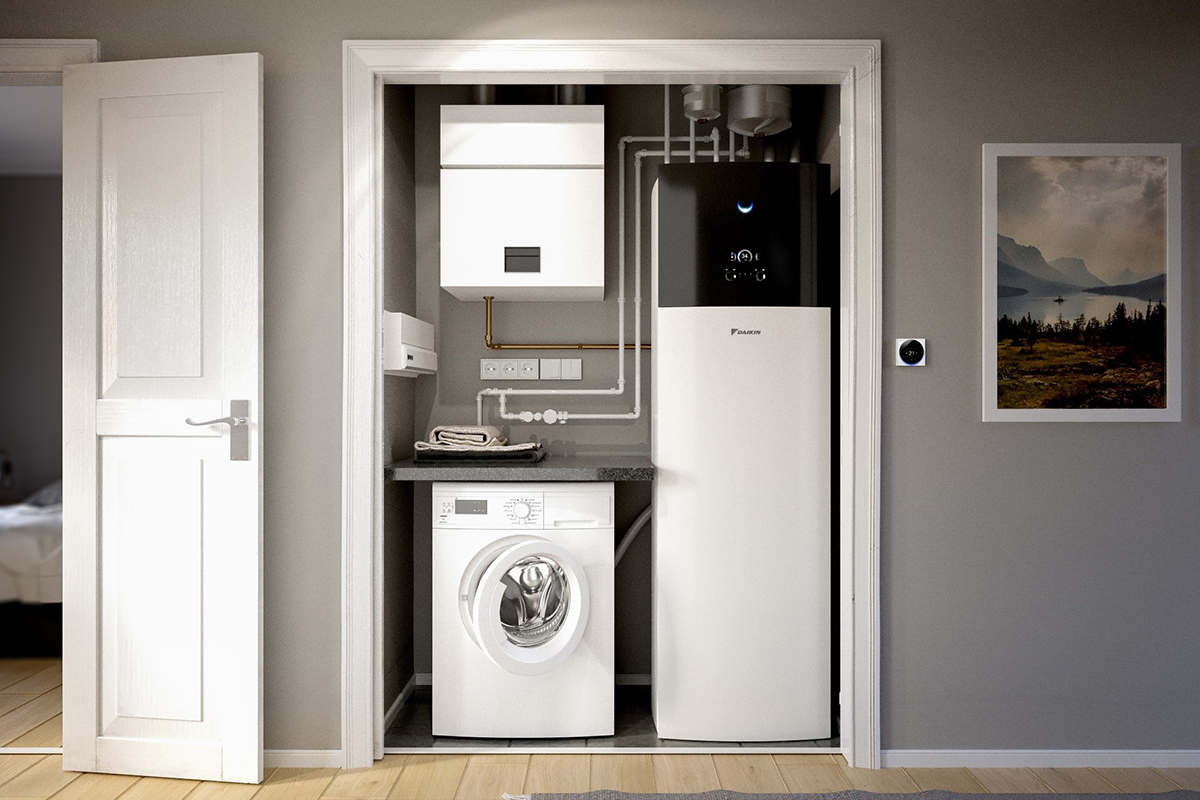
Ryan Philp, National New Homes Specialist at Daikin, looks at the impact of the Future Homes and Buildings Standard and how heat pumps will help to deliver the required changes.
In the UK, buildings are responsible for around 30% of the total greenhouse gas emissions. More than three-quarters (79%) of this results from heating, which alone represents 23% of all UK emissions. Of the emissions attributable to heating, homes account for the biggest section with 17% of total emissions compared to just 4% for commercial buildings and 2% for public buildings. This must be addressed if the UK is to achieve its target of reaching net zero by 2050.
The Future Homes and Buildings Standard
The new set of Building Regulations, which will be introduced in 2025, will lead to significant changes in the way new homes in England are built and heated. The new standards will require homes built from 2025 to have a carbon footprint that is at least 75% less than one built to 2013 edition energy efficiency requirements. The homes must also be ‘zero carbon ready’, meaning that no retrofit work will be required to allow the property to become zero-carbon as the electricity grid is decarbonised.
To achieve this, the Government is advocating a ‘fabric first’ approach to ensure that new homes, as well as other buildings, are built to a high standard of energy efficiency through insulation and air-tightness. However, the Future Homes and Buildings Standard will also dictate a level of heating performance that essentially eliminates the possibility of using fossil fuel heating, such as a natural gas boiler.
The Government response to the consultation on the Future Homes Standard (as it was then known), published in January 2021, notes that there is not likely to be a one-size-fits-all solution but also says it expects heat pumps to become the primary heating technology for new homes.
To ease the transition to the 2025 standards, and ensure that emissions reductions are achieved as soon as possible, an interim uplift in Approved Document L standards has been implemented. Under the new standards, which were announced in December 2021 and came into force in June, CO2 emissions from new build homes must be 30% lower compared to 2013 standards. Other new buildings such as offices and shops must achieve a 27% reduction.
The role of heat pumps
In many ways heat pump technology is an ideal solution for reducing the carbon impact of residential properties. Air source heat pumps (ASHP) extract energy from the outside air to heat the system’s refrigerant and provide heating and hot water. This allows heat pumps to typically operate at around 300% efficiency – generating 3kw of heat for every 1kw of electricity used – and rising to as much as 400% efficiency under optimum conditions. ASHPs can operate in temperatures as low as -25°C meaning that even in winter, this type of heat pump can still achieve 200% efficiency. As such, ASHPs compare favourably with gas condensing boilers, which typically achieve around 90% efficiency. Utilising heat pumps instead of gas or oil boilers eliminates the direct use of fossil fuels for heat and means a reduction in the amount of energy that homes consume.
However, although heat pumps fulfil the same role in the heating system, it is important to remember they do not work in the same way as a gas boiler. Heat pumps generally operate at a lower temperature compared to a traditional gas boiler, typically 50°C to 60°C. Therefore, they are most effective when the heating system is designed and optimised for these temperatures. For example, larger heat emitters may be required. Indeed, heat pumps perform very well with underfloor heating systems due to the large surface area.
In fact, a lower operating temperature is now stipulated in the updated version of Approved Document L to deliver the highest levels of efficiency. It states that new or fully replaced wet heating systems should be designed to operate effectively at a maximum flow temperature of 55°C. Where this does not allow the heating needs of the dwelling to be met, for example if the required size of heat emitter cannot be accommodated, it requires that the system be designed to operate at the lowest temperature possible that still delivers the appropriate output. This means that the new uplift regulations will help to improve the energy efficiency of renovated properties as well as new builds.
Types of heat pump
There are three main types of ASHP – split system, monobloc and hybrid heat pumps. Split systems consist of an indoor and outdoor unit connected by refrigerant pipework. It offers flexibility in terms of the placement of the outdoor unit but can only be installed by an engineer with F-Gas qualifications. Hybrid systems combine air-to-water heat pump technology with a gas condensing boiler.
For traditional volume house building, the monobloc ASHP technology is the most suitable.
Monobloc systems have only an outdoor unit that connects directly to the heating system, with all the refrigerant-containing circuits sealed within the unit. As it only requires water pipes to be run from the unit into the property, any heating engineer qualified to install a boiler can install a monobloc heat pump with the correct training. The real benefit to the supply chain being that FGas qualified engineers are not required to install them, providing greater flexibility, especially with the on-going skills shortage in mind.
It’s also worth mentioning Water Source Heat Pumps (WSHP), which meet the requirement for new build apartment applications. These offer huge potential and flexibility when it comes to integration with heat networks and smart grids. And are particularly suited where installation space is limited, especially when it comes to balconies and in terms of planning regulation obligations.
The changes driven by the recent updates and the Future Homes and Buildings Standard will change the heating industry, but also represent an opportunity for installers. This is especially true for those that invest in heat pump training now and establish their business in this area as the heat pump sector ramps up ahead of 2025.




